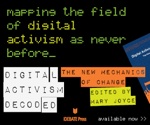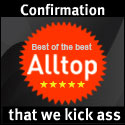Anya Woods is the Director of Advancement Communications for Lesley University and has shared her thoughts on a recent Facebook page development project.
I recently collaborated with our friends at Thought Labs - fantastic Facebook gurus - on the creation of a Facebook page for Lesley University. We just launched the page this week and have already seen great results, but the success of the page comes after weeks of hard work to make sure we got it just right. I thought I’d share five things we did that were instrumental in ensuring that the Facebook project wasn’t just something we could say we tried, but instead something with enough planning and strategy that we would see real and tangible success from it.
- We did our research. In approaching the Facebook project, we started with the idea that we wanted to create a space for our Lesley alumni only. But that was just the beginning… a lot of schools have alumni pages. What was going to make ours special, what was going to make it work and keep our alumni engaged and coming back? We decided we’d need a lot of different kinds of content, not just news and events. So we created a home page with many different functions. It has events, alumni highlights, access to our library resources, photos of alumni, announcements and news, video features, and ways to donate. We give people a range of content to interact with, and a lot of reasons to keep coming back.
- We researched and developed a strategy around our various audiences. Lesley is unique in that thousands of its alumni graduated from remote programs called cohorts, so many alumni relate to their program, but have never been to our campus in Cambridge, MA. In equal numbers, we’ve got traditional alumni who spent fours years on campus. How do we reach both audiences? How do we give them relevant information? Many schools face similar issues when trying to tie alumni chapters from other states back to the larger university. Others are looking for ways to bridge the young and more adult alumni. In any case, alumni bases are a highly disparate groups for any university. In our case we focused on the issue of connecting locally, and addressed it by creating tabs for each of our local regions and tied all those tabs to an Alumni Chapters section of our Facebook page. By doing so, we’ve given alumni a way to communicate with each other directly and locally, while keeping that interaction within the overall alumni page. Alumni are also able to post to the main wall tab, so they can communicate locally or with the larger group depending on preference and topic.
- We tapped the expertise of people on campus and beyond. To understand what our alumni are looking for, we spoke to alumni, staff who have worked with alumni for years, offsite coordinators from other states who deal with remote programs, and administrators who are looking for specific outcomes from the cultivation of relationships with alumni groups. We even changed, significantly, our original plans and designs for the site based on the advice and input of these various groups. Without their help, we wouldn’t have been able to produce a page that worked for our audience and really served their needs.
- We used fresh content and update it frequently. The page is not stagnant. And I’m not just talking about the wall. We post new information to the wall, but we also have dynamic pieces in the main landing page that will be updated frequently with new content, creating new reasons for alumni to come back and interact with the site.
- We promoted our page everywhere, and will continue to do so. Not just because we want people to become fans, but because we hope that the content on the page will be relevant and that by providing a place for our alumni to interact they will see value in their continuing interaction with the institution. It’s not about numbers, it’s about quality relationships. Nowhere else can our alumni message us directly and publicly and receive a candid reply from a real person quickly and openly. The value in that alone makes our Facebook page an incredibly important part of our communication with alumni. That’s why we didn’t throw up our logo on a page and start posting news items. We did our research, and created something dynamic and interesting, and devoted specifically to our alums.
In the end, we created a unique page that is tailored to the needs and wants of our alumni groups.
To check out the Facebook page, click here. If you’ve got questions about what we did, feel free to get in touch. If you love the page, contact Thought Labs to get your own!









